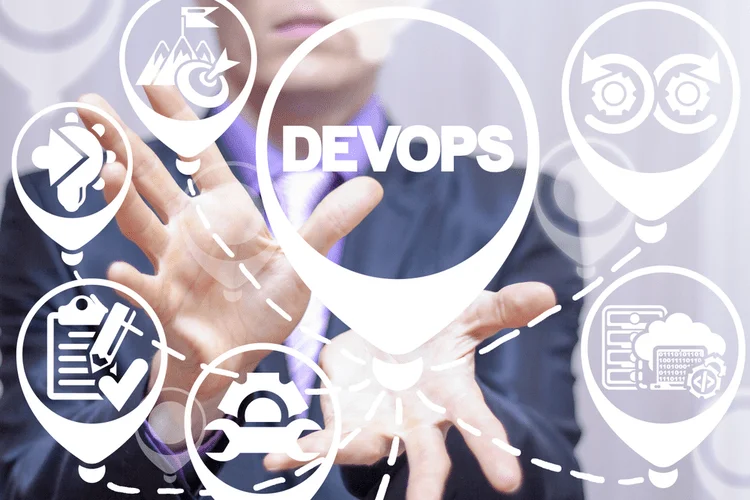During this pre-training phase, the model learns to foretell the subsequent word in a sequence, which helps it perceive the patterns and connections between words, grammar, data, reasoning skills, and even biases within the information. This pre-training process involves billions of predictions, allowing the mannequin to build a basic understanding of language. LLMs could be considered a subset of GenAI technologies, targeted particularly on advanced language understanding and technology. Training a big language model entails feeding it in depth amounts of text information, permitting it to study the patterns and buildings of human language. The major focus is on pre-trained models, which have been educated using unsupervised techniques on huge datasets.
The input text is first tokenized, which breaks it down into smaller items, corresponding to words or sub-words. These tokens are then transformed into numerical representations referred to as “embeddings,” which seize the context and that means of the words. The embeddings are then fed into the transformer structure for further processing. LLMs symbolize a extra superior and data-driven strategy to language modeling than conventional rule-based systems, delivering exceptional flexibility, scalability, and contextual understanding capabilities. Unsupervised studying is how LLMs initially be taught language structure by analyzing huge, unlabeled datasets.
Real-world Examples Of Large Language Fashions
A 2023 paper found that coaching the GPT-3 language mannequin required Microsoft’s knowledge facilities to make use of seven hundred,000 liters of contemporary water a day. ChatGPT is an AI chatbot developed by OpenAI that gives users with responses primarily based on their inputs. Aside from providing advanced, human-like responses, ChatGPT retains a log of your conversations to reference and inform future dialogue — just as (if not much better than) the human brain naturally would. A transformer is a kind of “neural network” architecture (yes, like a brain) designed by Google. Based on the evaluation outcomes, the mannequin could undergo further fine-tuning by adjusting hyperparameters, changing the architecture, or coaching on extra knowledge to improve its efficiency. The developments derived from LLMs have resulted in a wide range of tangible advantages.

This representation of what elements of the enter the neural community wants to concentrate to is learnt over time because the model sifts and analyzes mountains of information. Large language fashions (LLMs) are deep studying algorithms that may recognize, summarize, translate, predict, and generate content using very large datasets. Prior to 2017, machines used a model primarily based on recurrent neural networks (RNNs) to comprehend textual content. This model processed one word or character at a time and didn’t provide an output till it consumed the whole enter text.
Gpt-3
These fashions are skilled on huge quantities of text data to study patterns and entity relationships in the language. LLMs can carry out many types of language duties, corresponding to translating languages, analyzing sentiments, chatbot conversations, and more. They can understand complicated textual information, identify entities and relationships between them, and generate new text that’s coherent and grammatically accurate, making them ideal for sentiment analysis.

In distinction, Generative AI models can be educated on numerous knowledge types, corresponding to images and audio, to create authentic content in these respective formats. Imagine LEGO bricks because the building blocks of an unlimited, intricate structure, where each brick represents a bit of information or language understanding. Similarly, large language models are like digital LEGO bricks, however as a substitute of physical pieces, they are digital elements that understand and generate human-like text. However, massive language fashions, which are trained on internet-scale datasets with hundreds of billions of parameters, have now unlocked an AI model’s capability to generate human-like content. Large language models are some of the most superior and accessible pure language processing (NLP) solutions today.
Be Taught Extra With
Fine-tuning is like specialised training for specific duties (translation, writing, and so on.) utilizing smaller, labeled information. Despite the large capabilities of zero-shot learning with giant language models, builders and enterprises have an innate need to tame these techniques to behave of their desired manner. To deploy these giant language models for particular use instances, the models may be custom-made utilizing a number of strategies to achieve higher accuracy. Thanks to the in depth training process that LLMs bear, the models don’t have to be educated for any specific task and can as an alternative serve a number of use cases.
These methods help address biases, factual inaccuracies, and inappropriate outputs that may arise from coaching on giant, diverse datasets. The capabilities and efficiency of large language models are frequently bettering. LLMs increase and enhance as more knowledge and parameters are added—the more they be taught, the higher they get. These advanced AI methods could be leveraged to enhance a extensive range of safety capabilities, from advanced menace detection and vulnerability evaluation to privilege escalation discovery and automated response.
Copyright Office has acknowledged unequivocally that AI-generated work cannot be copyrighted. This locations weights on certain characters, words and phrases, helping the LLM establish relationships between particular words or ideas, and total make sense of the broader message. Large language models are the spine of generative AI, driving developments in areas like content creation, language translation and conversational AI.
Large language models (LLMs) are artificial intelligence (AI) systems skilled on massive amounts of text data to grasp, generate, translate, and predict human language. A. LLMs in AI check with Language Models in Artificial Intelligence, that are models designed to grasp and generate human-like textual content using pure language processing techniques. LLMs also excel in content material era, automating content creation for weblog articles, marketing or gross llm structure sales supplies and different writing tasks. In research and academia, they assist in summarizing and extracting info from vast datasets, accelerating information discovery. LLMs additionally play a vital position in language translation, breaking down language limitations by offering accurate and contextually related translations. LLMs are first exposed to massive quantities of textual content information, usually within the range of billions of words, from sources like books, websites, articles, and social media.
Examples Of Llms
Language is on the core of all forms of human and technological communications; it supplies the words, semantics and grammar wanted to convey ideas and concepts. In the AI world, a language model serves an analogous function, offering a basis to speak and generate new ideas. The first step in building a big language model is to discover out what sort of LLM you wish to build. This includes gathering a vast and diverse dataset of text from varied sources, corresponding to books, articles, web sites, and more. A 2019 analysis paper found that training only one mannequin can emit greater than 626,000 kilos of carbon dioxide — nearly 5 times the lifetime emissions of the average American automotive, including the manufacturing of the automotive itself.
- LLMs are skilled on large datasets of textual content, like books, articles, and even conversations, but then have to be fine-tuned to provide tailor-made results depending on the duty at hand.
- During the training course of, these fashions study to predict the next word in a sentence primarily based on the context offered by the previous words.
- A 2019 research paper discovered that coaching just one model can emit more than 626,000 kilos of carbon dioxide — practically 5 times the lifetime emissions of the common American car, together with the manufacturing of the car itself.
- These examples demonstrate the flexibility of LLMs throughout numerous industries whereas addressing particular demands inside bigger sectors like cybersecurity.
- This network consists of multiple layers, all of which work collectively to break down textual content into smaller pieces like words or characters, called tokens, to find out the connection and which means between each token.
In a similar method, massive language models goal to simplify interactions with expertise by understanding pure language, making it accessible to a broader viewers. Similarly, with their huge data base, massive language models can be configured and combined to know and generate all kinds of textual content material. Once skilled, they can apply their language understanding to duties they were never explicitly trained for, ranging from writing essays to coding to translating languages. Train, validate, tune and deploy generative AI, basis fashions and machine learning capabilities with IBM watsonx.ai, a next-generation enterprise studio for AI builders. At the foundational layer, an LLM needs to be trained on a large volume — typically referred to as a corpus — of knowledge that is usually petabytes in measurement.
Key Benefits Of Chatbots For Companies
This complexity can pose a barrier for organizations looking to develop or utilize these fashions. If the coaching knowledge lacks quality or variety, the models can generate inaccurate, misleading or biased outputs. A. The full type of LLM model is “Large Language Model.” These fashions are trained on huge amounts of textual content data and can generate coherent and contextually related textual content. Recent developments in hardware capabilities, paired with improved coaching strategies and the increased availability of knowledge, have made language models more highly effective than ever before. A Large Language Model (LLM) is a foundational mannequin designed to grasp, interpret and generate text utilizing human language.

These machine studying models work by analyzing patterns and relationships between words and phrases, very like how the human mind processes language. With unsupervised learning, fashions can discover previously unknown patterns in data using unlabelled datasets. This additionally eliminates the need for extensive knowledge labeling, which is considered one of the greatest challenges in constructing AI models. Self-attention assigns a weight to every a part of the enter information whereas processing it. This weight signifies the importance of that enter in context to the relaxation of the enter. In other words, models no longer have to dedicate the same attention to all inputs and can focus on the parts of the enter that actually matter.
We’ll doubtless see additional developments of extra specialized models tailored to particular industries or domains. For example, there’ll continue to be advanced LLMs designed for the legal, medical, or financial sectors, trained on domain-specific terminology and information to better handle the unique language and requirements of those fields. This specialization might assist handle a few of the limitations of general-purpose LLMs concerning dealing with sensitive or extremely technical data. While LLMs are centered on language-related duties, Generative AI has a broader scope and may be utilized to a variety of industries, from content material creation and personalization to drug discovery and product design. The mixture of LLMs and Generative AI can lead to highly effective purposes, such because the generation of multimodal content, customized recommendations, and interactive conversational experiences. To enhance the efficiency and accuracy of LLMs, numerous methods may be employed, similar to immediate engineering, prompt-tuning, and fine-tuning specific datasets.

During preprocessing, each token (word or subword) is converted right into a vector illustration referred to as an embedding. Embeddings capture semantic information about words, allowing the model to know and study the relationships between them. They can carry out all kinds of duties, from writing business proposals to translating entire paperwork. Their ability to know and generate pure language also ensures that they are often fine-tuned and tailor-made for particular functions and industries. Overall, this adaptability means that any group or particular person can leverage these fashions and customise them to their distinctive needs.
As a type of generative AI, large language models can be used to not only assess present text but to generate unique content material based mostly on person inputs and queries. The coaching process involves predicting the next word in a sentence, an idea known as language modeling. This fixed guesswork, performed on billions of sentences, helps fashions learn patterns, rules and nuances in language. In current years, there was specific interest in massive language mannequin (LLMs) like GPT-3, and chatbots like ChatGPT, which can generate pure language text that has little or no difference from that written by people. These basis models have seen a breakthrough within the field of synthetic intelligence (AI).
Modern LLMs emerged in 2017 and use transformer models, that are neural networks commonly referred to as transformers. With a lot of parameters and the transformer mannequin, LLMs are capable of understand and generate accurate responses rapidly, which makes the AI technology broadly applicable throughout many different domains. A GPT, or a generative pre-trained transformer, is a type of language studying model (LLM). Because they are particularly good at dealing with sequential information, GPTs excel at a variety of language associated tasks, together with text generation, textual content completion and language translation. Fine-tuned models are essentially zero-shot learning models which have been skilled using additional, domain-specific knowledge in order that they’re higher at performing a selected job, or extra educated in a particular material. Fine-tuning is a supervised studying process, which means it requires a dataset of labeled examples in order that the mannequin can extra precisely establish the concept.
LLMs usually struggle with commonsense, reasoning and accuracy, which may inadvertently cause them to generate responses which are incorrect or misleading — a phenomenon known as an AI hallucination. Perhaps even more troubling is that it isn’t at all times apparent when a model gets things incorrect. Just by the character of their design, LLMs bundle information in eloquent, grammatically appropriate statements, making it easy to just accept their outputs as reality.